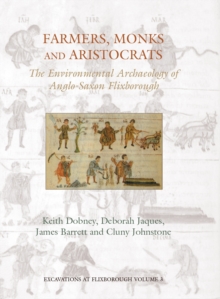
The Early Medieval Settlement Remains from Flixborough, Lincolnshire : The Occupation Sequence, c. AD 600-1000 Hardback
by David Atkinson, Christopher Loveluck
Part of the Excavations at Flixborough series
Hardback
Description
Between 1989 and 1991, excavations in the parish of Flixborough, North Lincolnshire, unearthed remains of an Anglo-Saxon settlement associated with one of the largest collections of artefacts and animal bones yet found on such a site.
In an unprecedented occupation sequence from an Anglo-Saxon rural settlement, six main periods of occupation have been identified, dating from the seventh to the early eleventh centuries; with a further period of activity, between the twelfth and fifteenth centuries AD.
The remains of approximately forty buildings and other structures were uncovered; and due to the survival of large refuse deposits, huge quantities of artefacts and faunal remains were encountered compared with most other rural settlements of the period.
The quality of the overall archaeological data contained within the settlement sequence is important for both the examination of site-specific issues, and for the investigation of wider research themes and problems, facing settlement studies in England, between AD 600 and 1050. Volume 1 focuses on the occupation sequence, looking at the structural and stratigraphical evidence from the site, and interpreting the changing use of the site during its lengthy occupation.
This interpretation of the occupation sequence forms the basis for all thematic discussions in Volumes 3 and 4.
It also examines the evidence for burials at the site, and places this into the wider context of sepulchral practices in mid and late Saxon England.
Finally there is discussion of the osteological remains themselves, giving hints of the demographic spectrum of the inhabitants, their lifestyles and ailments.
Information
-
Item not Available
- Format:Hardback
- Pages:208 pages, 150 b/w illus, 16p col plates
- Publisher:Oxbow Books
- Publication Date:12/11/2007
- Category:
- ISBN:9781842172551
Information
-
Item not Available
- Format:Hardback
- Pages:208 pages, 150 b/w illus, 16p col plates
- Publisher:Oxbow Books
- Publication Date:12/11/2007
- Category:
- ISBN:9781842172551










